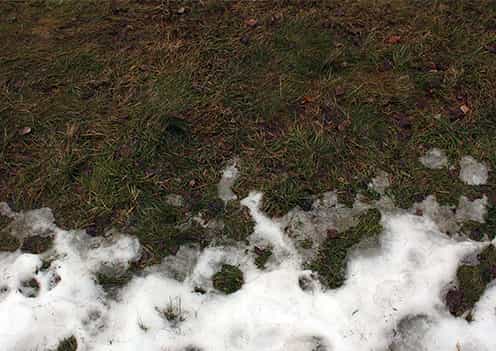Your Cart

Winter Lawn Dormancy
Why Is My Lawn Turning Brown During the Winter?

There is no doubt that your lawn is greatly affected by the elements during the winter season. When the cool temperatures arrive, many homeowners start to notice their lawns turning brown. You may be wondering why. Well, just like any other species, turf plants must adapt in order to survive. When the winter hits, your grass will go dormant in order to preserve scarce resources. In order to understand winter dormancy, you must understand why and how it occurs. Lawns go into ‘hibernation mode’ (dormancy) when they do not receive enough valuable resources, such as sunlight or water. Dormancy acts as a method of conserving moisture, which protects the grass from seasonal damage and allows it to cope with extreme temperatures and conditions. Cold, snowy winters can be harsh on grass plants, which is why cool-season grasses (bluegrasses, fescues, and ryegrasses) become dormant when temperatures consistently fall below 45-55 degrees F. However, dormancy can also occur in extremely hot, dry weather. When dormant, the grass plants relocate themselves and utilize the valuable resources stored in its most important element: the crown. If the grass crown remains healthy, your turf will return to its lush, green state when the resources become more abundant. If you’re a homeowner located in the north, you can expect your grass to become thin, dry, and discolored (brown or straw-like) this winter. Although it may not be the nicest to look at, it is a necessary evil that will help your turf stay strong in the face of seasonal stressors. When the winter comes to an end and warmer temperatures return, dormant grass will transition back to its original state. Sometimes parts of your lawn may die, get damaged, or thin over the winter. The first sign that your grass has died is that it does not green up in the spring. You should also try to tug on the grass to see if it is still well-rooted. If you tug on the grass and it lifts easily, then it is likely dead. It is also important to take note of the grass pattern. Are there brown spots in your lawn, or is the entire lawn brown? If your entire lawn is brown, it is likely still dormant; however, a spotty pattern can be an indication that parts of your grass have suffered damage over the winter. Brought to you by Weed Man Lawn Care: we care for your lawn.What Causes Winter Dormancy
What Does Dormant Grass Look Like?
Is My Lawn Dead or Dormant?
 English (USA)
English (USA) Français (CANADA)
Français (CANADA)